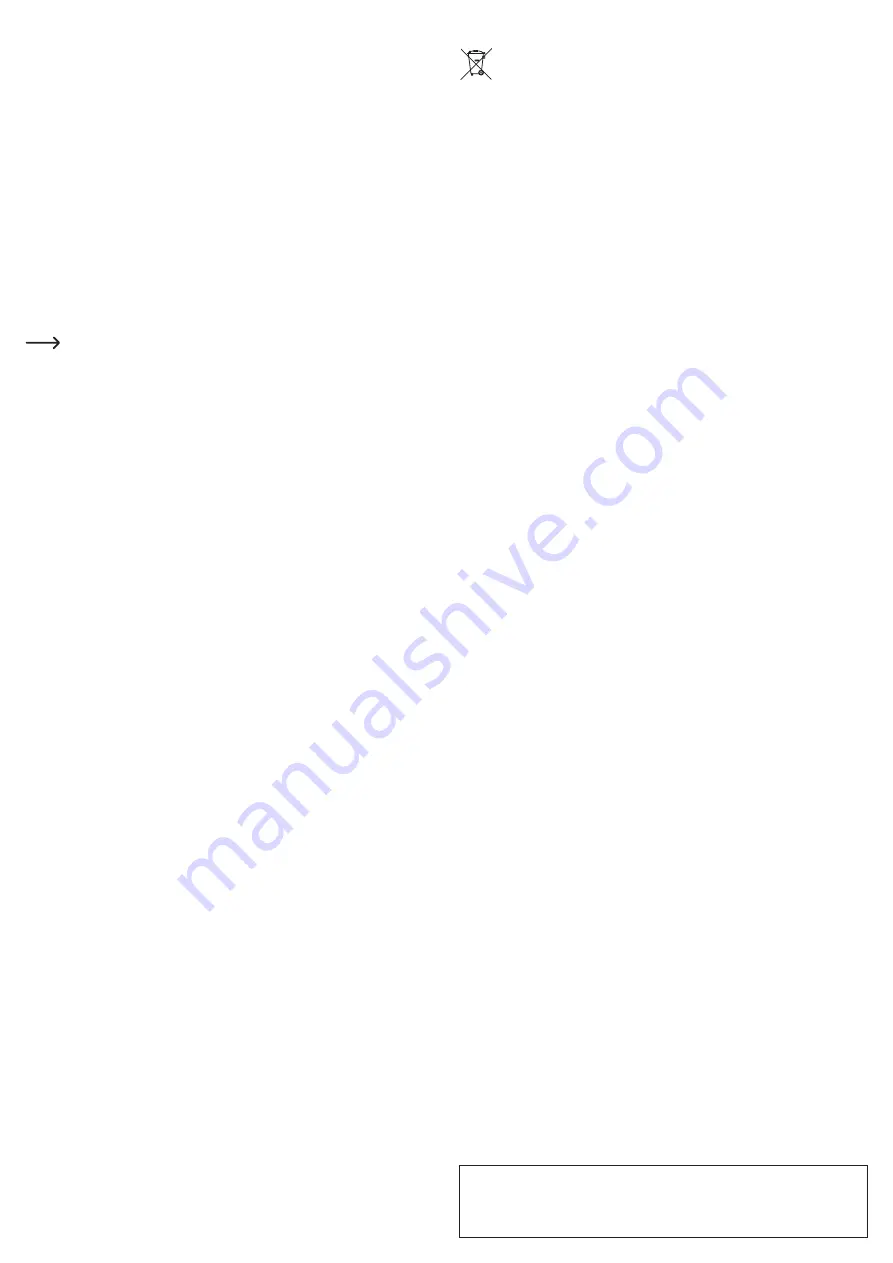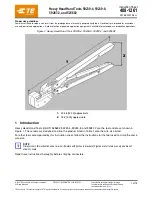
This is a publication by Conrad Electronic SE, Klaus-Conrad-Str. 1, D-92240 Hirschau (www.conrad.com).
All rights including translation reserved. Reproduction by any method, e.g. photocopy, microfilming, or the capture in
electronic data processing systems require the prior written approval by the editor. Reprinting, also in part, is prohibited.
This publication represent the technical status at the time of printing.
Copyright 2017 by Conrad Electronic SE.
*1511577_v1_0117_02_DS_m_4L_(1)
c) Drilling tips
• Mark the middle of the drilling hole with a sharp drawing instrument or scriber. Punch-mark
in the centre with a centre-punch. In the case of softer materials, you can centre the drilling
hole by turning to the left while lightly pressing on the drill. If necessary, pre-drill a hole with
the diameter of the centring drill.
•
Place the hole saw onto the marked point at a 90° angle.
• Turn on the drill and press the trigger.
• When placing the hole saw onto the material, use a speed that is slightly lower until the teeth
have penetrated a little deeper into the material and a groove has developed. You can then
increase the speed. If the surface is not level (e.g. pipes), the hole saw should be guided
through the grooves at 2 opposite points before you drill faster and with more power.
• Adjust the max. speed depending on the hole saw that you are using. As a rule of thumb,
larger hole diameters should always be drilled slowly. Softer materials are able to tolerate
high speeds without rattling. For example, wood can be drilled at a higher speed than metal.
• Slots in the casing allow for chip disposal and make removing cut-out parts easier.
• Stop the drill as soon as the material has been cut through by the hole saw or the desired
counterbore depth has been reached, and then remove the entire tool from the material.
• Remove the drill core from the hole saw. Shake the hole saw and/or press out/push the
drilling core forwards through the slots in the casing with an appropriate screwdriver.
This tool can only be used to drill through-holes in materials with a thickness that
corresponds to the depth of the hole saw. It cannot be used to drill blind holes.
Maintenance and cleaning
•
Never use aggressive detergents, cleaning alcohol or other chemical solutions, as these may
damage or blunt the edges of the drilling bit.
• Always disconnect the product from the drill before cleaning it.
• Remove dust and shavings from all attachment threads and drill coils. For best results, use
brushes with hard bristles or compressed air (if available)
• Use a dry, lint-free cloth to clean the product.
Maintenance
a) General maintenance
•
If you do not plan to use the product for a prolonged period, apply a small amount of oil to
prevent excess corrosion and ensure that all moving parts run smoothly.
• Sharpen the drill bit if the cutting edges become blunt.
b) Changing the drill bit
•
If the drill bits become blunt, replace them with new HSS drill bits with the same diameter.
• Grind locking notches onto the replacement drill bits using the existing drill bits as a model.
For best results, use a suitable bench grinder. A die grinder with a suitable grinding tool can
also be used; ensure that you clamp the drill bit to a vice.
•
Loosen the locking screw using the the hex key (included with the product) until the drill bit
can be easily removed from the attachment.
•
Insert a new drill bit into the through-hole on the attachment.
• Tighten the locking screw until the drill bit is securely in place.
Disposal
At the end of its service life, dispose of the product according to the relevant statutory
regulations.
You thus fulfil your statutory obligations and contribute to the protection of the environment.
Technical data
Drill bit material ......................................
HSS 4341
Material (hole saw)
................................ HSS M3
Material (hex key)
.................................. Cr-V
Suitable for ...........................................
Wood, PVC, metals (ferrous and non-ferrous metals)
Surface finish (hole saw)
....................... Powder-coated
Hole saw diameter .................................
ø 22, ø 29, ø 35, ø 44, ø 51, ø 68 mm
Dimensions (L x W x H)
......................... 255 x 165 x 65 mm
Weight ................................................... 1.15 kg


























